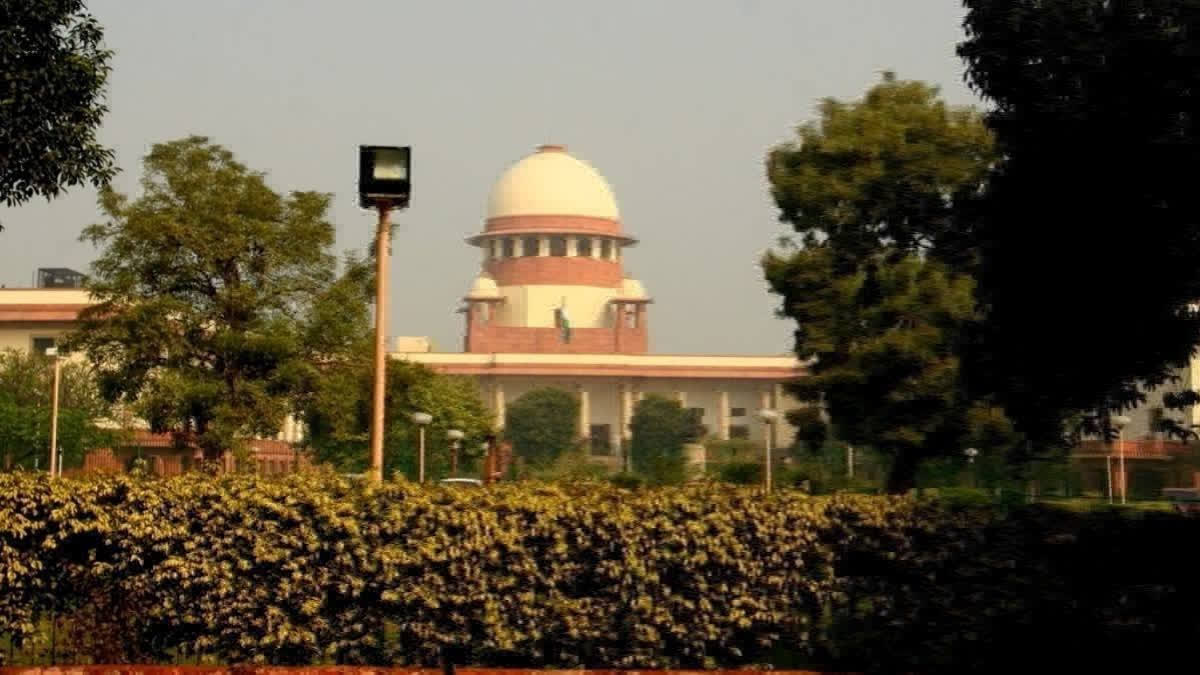New Delhi:Two failed marriages, becoming a victim of dowry harassment, and a protracted legal battle were not enough to shake the confidence of a woman, who moved the Supreme Court seeking maintenance from her second husband. On her plea, the Supreme Court, emphasising on protecting the financial security of the women, recently ruled that a woman is entitled to claim maintenance, under Section 125 of the CrPC from her second husband, even though her first marriage was allegedly to be legally subsisting.
The woman moved the top court seeking maintenance of Rs 5,000 per month. A bench comprising Justices B V Nagarathna and Satish Chandra Sharma said: "It must be borne in mind that the right to maintenance under Section 125 Criminal Procedure Code is not a benefit received by a wife but rather a legal and moral duty owed by the husband".
Justice Sharma, who authored the judgment on behalf of the bench, cited the objective of maintenance under Section 125 CrPC as laid out by Justice Krishna Iyer in Captain Ramesh Chander Kaushal vs. Veena Kaushal and Others (1978). Then, the top court, while upholding an award of maintenance beyond the monetary limitation prescribed under the provision, had held: "We have no doubt that sections of statutes calling for construction by courts are not petrified print but vibrant words with social functions to fulfil. The brooding presence of the constitutional empathy for the weaker sections like women and children must inform interpretation if it has to have social relevance".
Justice Sharma said it is settled law that social welfare provisions must be subjected to an expansive and beneficial construction and this understanding has been extended to maintenance since Captain Ramesh Chander Kaushal vs. Veena Kaushal and others (1978).
"The family court made a factual finding that appellant No. 1 married the respondent and that finding is not disputed by the respondent (second husband). Instead, the respondent seeks to defeat the right to maintenance by claiming that his marriage to appellant no. 1 is void ab initio as her first marriage is still subsisting," noted the bench, in a judgment delivered on January 30.
The bench noted that it is not the case of the second husband that the truth was concealed from him, and, in fact, the family court made a specific finding that the second husband was fully aware of the first marriage of the woman.
The woman placed before the apex court a memorandum of understanding (MoU) of separation with her first husband. "While this is not a legal decree of divorce, it also emerges from this document and other evidence that the parties have dissolved their ties, they have been living separately and appellant No. 1 (woman) is not deriving maintenance from her first husband," noted the bench.
Justice Sharma said barring the absence of a legal decree, the woman is de facto separated from her first husband and is not deriving any rights and entitlements as a consequence of that marriage. "In the opinion of this court, when the social justice objective of maintenance u/s. 125CrPC is considered against the particular facts and circumstances of this case, we cannot, in good conscience, deny maintenance to appellant No. 1," said Justice Sharma.
Citing Ramesh Chander ruling, Justice Sharma said an alternate interpretation would not only explicitly defeat the purpose of the provision by permitting vagrancy and destitution, but would also give legal sanction to the actions of the respondent in knowingly entering into a marriage with appellant no.1, availing its privileges but escaping its consequent duties and obligations.
"The only conceivable mischief that could arise in permitting a beneficial interpretation is that the appellant no.1 could claim dual maintenance--however, that is not the case under the present facts," noted the bench.
The top court allowed the petition plea by a woman assailing a 2017 order passed by a high court, which held that she could not be considered the legal wife of the respondent man as her first marriage with another man was still subsisting. However, the high court had allowed the plea for such maintenance to a daughter born to the couple.
The bench also cited 'Mohd Abdul Samad Vs State of Telangana and Another' (2024) which has shed greater light on the duty upon the husband in the Indian context.
During the hearing, the petitioner’s counsel had argued that the woman and the respondent man were de facto living as a married couple and raising a child together, the benefit of maintenance should be extended to her. The man had contended that the woman cannot be considered his wife, as she had a legally subsisting marriage with her first husband, and cannot seek maintenance.
In 1999, the woman got married in Hyderabad. In 2000, she gave birth to a male child. In 2005, when the couple returned from the US, they began living separately. In November 2011, by an MoU, the couple dissolved their marriage. Two days later, the woman got married with her neighbour, the respondent man in the present case.
A family court declared the first marriage null and void in February 2006. Within days, the woman again got remarried with the respondent man. A daughter was born to the couple in January 2008. However, differences again arose between them and the woman lodged an FIR against the man and his family members for dowry harassment. In 2012, the court granted her and the daughter a monthly sum of Rs 5000 and Rs 3500 respectively. The man challenged this order in the high court, which ruled in his favour and set aside the maintenance order for her. The woman moved the apex court against the high court order.
